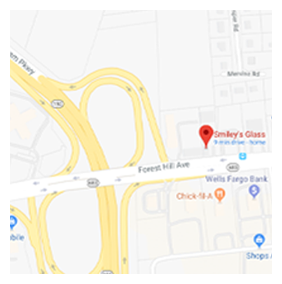How to Stop Your Car Windows From Fogging Up
- Details

Temperature shifts and humidity are part of everyday driving, but when they cause your windows to fog, the result can be frustrating and hazardous. Whether starting your car on a chilly morning or sitting in traffic during a rainstorm, losing visibility to fogged glass is a common issue that shouldn’t be ignored. Knowing what’s behind it and how to prevent it can make all the difference in your daily drive.
What Causes Car Windows to Fog?
Foggy car windows are a common issue caused by condensation. When the temperature inside your vehicle differs from the temperature outside, moisture in the air collects on the cold surface of the windows. This typically occurs when the inside of the car is warm and humid, and the outside air is dry and cold. The glass acts as a barrier where the humidity condenses into visible fog.
Every day activities contribute to humidity. Anything from wet clothing to damp floor mats can add moisture to the car's air. Once trapped, that moisture condenses quickly when exposed to colder glass, creating a fog layer that obstructs your view and compromises driving safety. If you're experiencing an ongoing issue with condensation on your car windows, consider contacting an auto glass shop to determine if the window seals are damaged.
Why Do Windows Fog More in Winter and Rain?
Temperature can affect your windshield in different ways. Colder months bring more noticeable fogging because the temperature difference between the inside and outside of your vehicle increases. When it’s cold outside, drivers tend to turn up the heat, which creates a warmer interior. If that warm air is humid, it reacts when it hits the cold glass, causing faster and heavier condensation.
Rain presents a similar problem. It increases the humidity in the air, and as people enter their vehicles wet from the rain, they bring extra moisture inside. Combined with the tendency to run the heat or AC, these conditions are perfect for fog formation. Since warm air holds more moisture than cooler air, this often results in condensation or fog on the interior of your windshield. To help correct this occurrence, try turning on the AC to balance the temperature.
How Can You Prevent Car Windows from Fogging Up?
If you’ve ever started your car and been met with fogged-up windows, you know how quickly it can delay your day and impact your safety. Whether you're headed to work on a cold morning or driving during rainy weather, foggy windows reduce visibility and increase your risk on the road.
This common problem affects drivers year-round, but especially during winter and humid conditions. While there isn’t a one-size-fits-all solution to prevent foggy windows since it depends on the source of moisture in the vehicle, there are several effective ways to minimize or stop window fog before it starts:
1. Use Your Defroster Properly
Set your defroster to blow warm air across the windshield. Warm air helps evaporate condensation. Many vehicles also include an A/C option in defrost mode that dehumidifies the air for faster results. Make sure the vents are directed at the glass and not your feet or upper body to be most effective.
2. Keep the Inside of Your Car Dry
Remove snow, water, and wet items before getting into the vehicle. Shake off umbrellas, coats, and boots. Use floor mats to keep water from soaking into the carpet, and occasionally dry them out. The less moisture that enters your vehicle, the less chance it has to collect on the windows.
3. Crack the Windows
If conditions allow, slightly opening a window can help equalize interior and exterior temperatures and reduce humidity. This works especially well during mild rainy days or when parked for extended periods. Even a small opening can let out moist air and bring in drier outside air to reduce interior fogging.
4. Use Anti-Fog Products
Apply an anti-fog solution to the inside of your windows. These products create a barrier that prevents moisture from clinging to the glass. They’re inexpensive and easy to apply, although they may require frequent reapplication. Look for products specifically made for automotive use for the best results.
5. Check Your Cabin Air Filter
A clogged or dirty cabin filter can reduce airflow and increase moisture buildup inside the car. Replacing the filter helps improve air circulation and dehumidification. It's a quick and affordable maintenance task that can make a noticeable difference in cabin air quality.
6. Turn Off Recirculation Mode
Using fresh air mode instead of recirculation helps bring in drier outside air and push out the humid air inside the cabin, which speeds up defogging. Recirculation traps moisture in the car, especially when multiple passengers or pets are in your vehicle, generating excess humidity during colder months.
7. Keep Your Windows Clean and Address Any Damaged Auto Glass
Dirt and grime give moisture more surface area to cling to. Regularly cleaning the inside of your windows can help reduce the chances of fog forming in the first place. Use a high-quality glass cleaner and a microfiber cloth to avoid streaks and buildup that can worsen fogging.
Damaged auto glass and seals can allow moisture into your car and increase the chance of foggy windows. Prompt repairs or replacement of any damaged windows will keep your travels safer and less foggy.
Trusted Auto Glass Repair in Richmond, VA
The experts at Smiley’s Glass will ensure you receive the highest-quality service for your vehicle when you need a full auto glass replacement or a repair. We offer mobile installation for our services to fit your busy schedule. Call us today at (804) 320-7172 or visit us online for a free quote.








